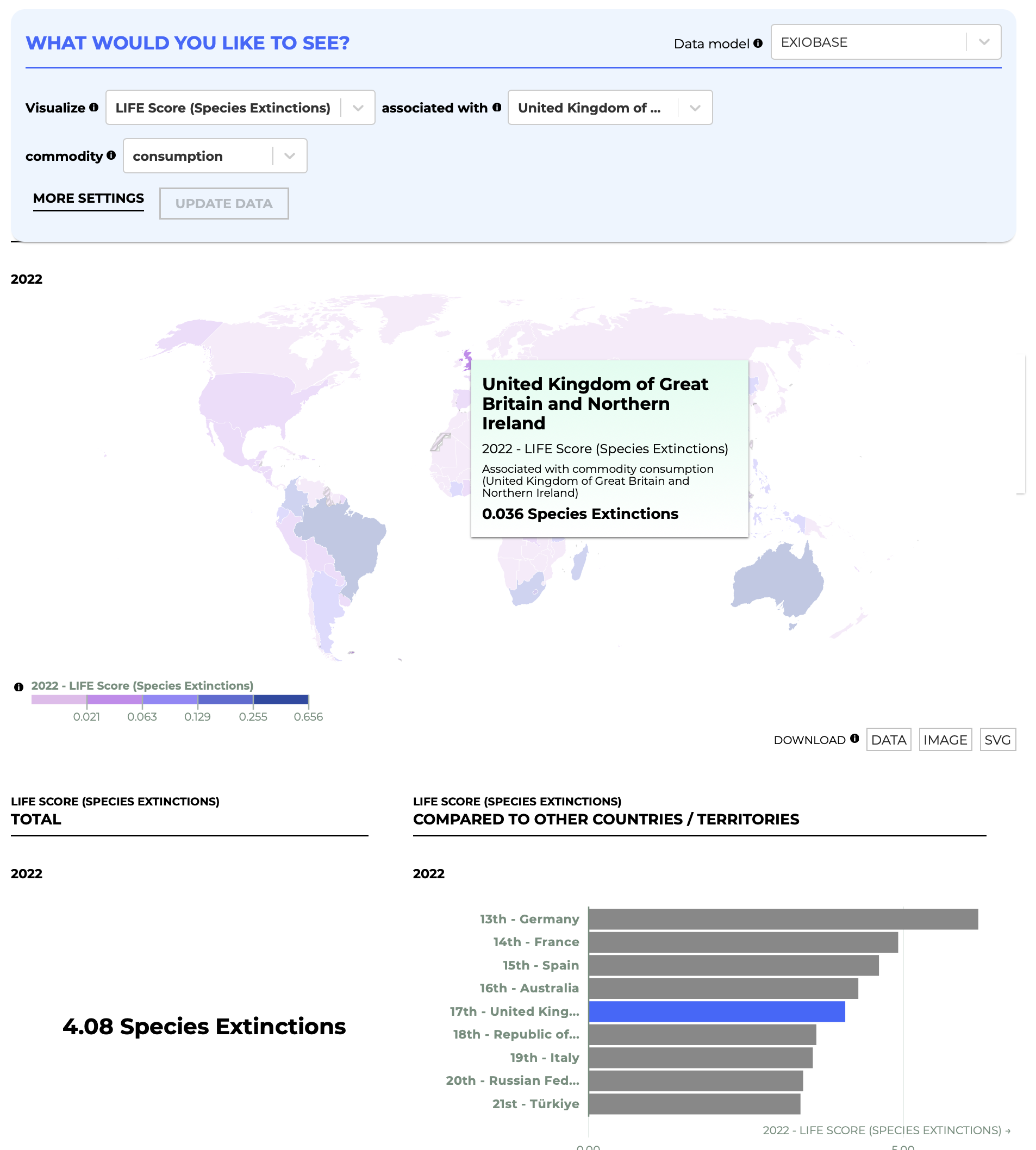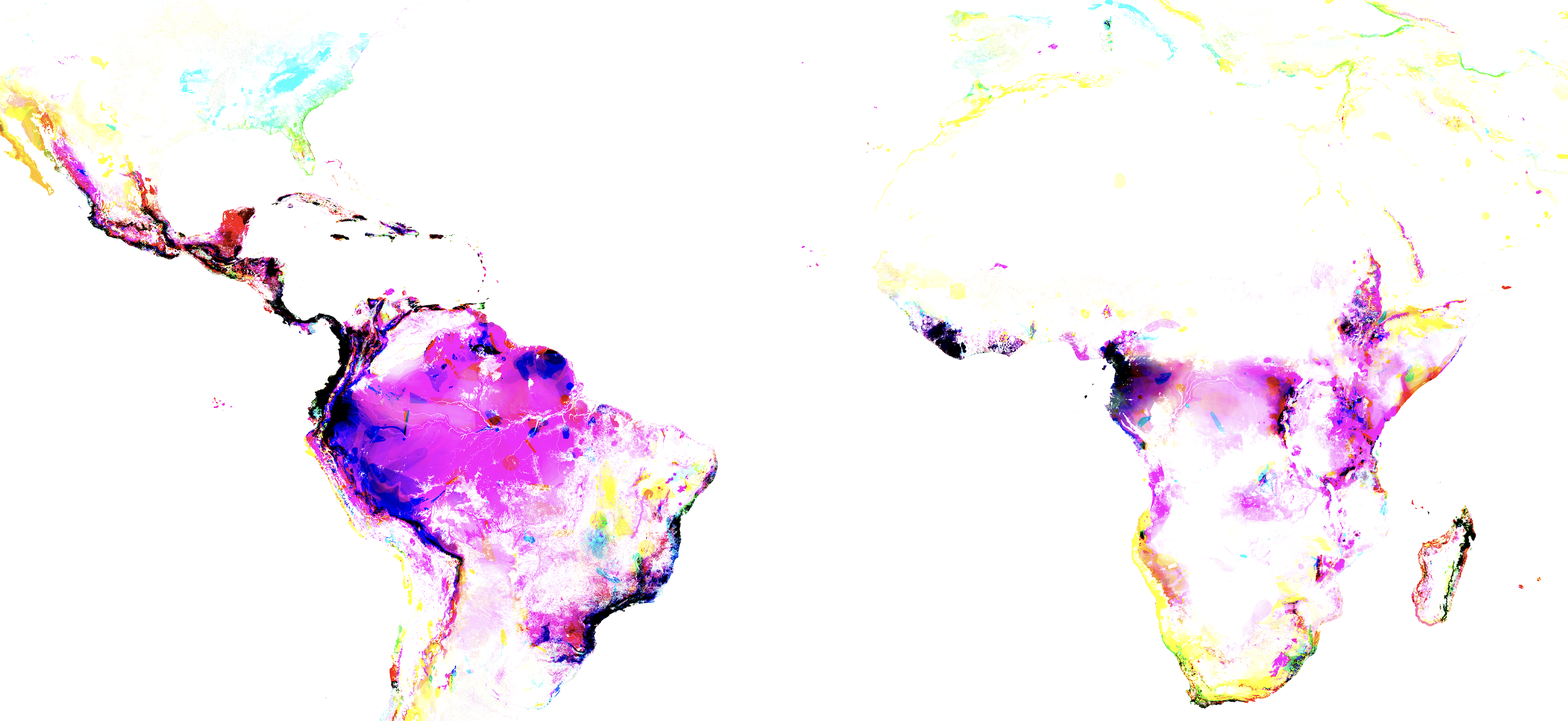LIFE becomes an Official Statistic of the UK government / Mar 2025 / DOI
Our
I must admit that I'd not heard of "Official Statistics" before this, so I did a bit of research. The UK Office for Statistics Regulation says that:
Official statistics are statistics produced by Crown bodies and other organisations listed within an Official Statistics Order, on behalf of the UK government or devolved administrations. They provide a factual basis for assessment and decisions on economic, social and environmental issues at all levels of society. -- OSR Policies
The good folk at the Joint Nature Conservation Committee are responsible for this particular statistic. The JNCC launched their Together for Nature strategy in 2023, and have the remit of turning scientific outcomes into robust evidence-based action for protecting nature worldwide. They've been developing a Global Environmental Impacts of Consumption indicator that provides information to policymakers about the tradeoffs of various consumption actions vs the corresponding global environmental impact.
When products arrive in our shops and on our doorsteps, they can look very different to the raw ingredients that were used to make them. Most products are made up of many parts, and these can move thousands of miles through many countries before reaching their final destination.
The average consumer is so far removed from the production process, both physically and conceptually, that it is hard to imagine where their products are from, let alone the environmental impacts resulting from their production. This is also true for the academics and governments working to monitor and reduce the environmental impact of our consumption. -- DEFRA Blog
Their GEIC tool, developed jointly with the Stockholm Environmental Institute and our LIFE collaborator

This metric is updated annually, and this year
This year's GEIC update is the first where it was recognised by the OSR as being of sufficient stability and quality to "graduate" into Offical Statistic status. A pretty cool feeling, and it's all openly downloadable of course; you can navigate over to the Commodity Footprints LIFE section to explore the metrics for yourself.
From a

There's quite a long gap between the original observations and the resulting policy use, with many humans in the loop in between. Computational systems need to capture all this nuance rather than viewing these metrics as "just" dataflow pipelines. However, it's equally important to capture the policy customisations in some sort of code, so that we can reliably issue annual updates. Figuring this pipeline out is part of what we're working on in the
References
- Eyres et al (2025). LIFE: A metric for mapping the impact of land-cover change on global extinctions. 10.1098/rstb.2023.0327
- Ball et al (2025). Food impacts on species extinction risks can vary by three orders of magnitude. 10.1038/s43016-025-01224-w